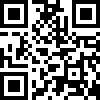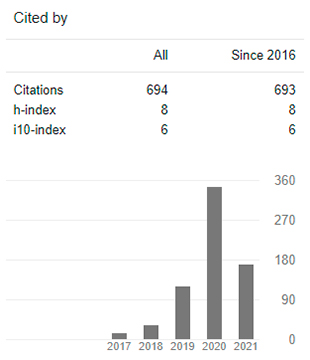Social Media Applied to Dental Education Learning
Las Redes Sociales Aplicadas al Aprendizaje de la Odontología
DOI:
https://doi.org/10.29394/Scientific.issn.2542-2987.2025.10.35.7.149-170Keywords:
social media, higher education, learning, dental education, educational technologyAbstract
This study analyzes the impact of social media on the teaching-learning process of dentistry students at Universidad Católica de Cuenca (UCACUE). Using a mixed (qualitative-quantitative) descriptive approach, a survey was applied to 93 eighth-semester students during the 2022-2023 academic period. Results revealed that 99% use social media and 91% incorporate these platforms into their educational process. YouTube (83,10%) stands out as the preferred platform for theoretical-practical learning, while WhatsApp (76,60%) leads in clinical feedback. 95% consider these platforms useful for theoretical components and creating educational videos. 78% perceive benefits in both theoretical and practical subjects. Time dedicated to social media (65% between 3-5 hours daily) raises questions about possible effects on academic performance. The study concludes that social media represents complementary pedagogical tools with high potential to enrich dental education, although institutional regulations are required for their systematic integration into all courses and the development of critical digital competencies that allow students to discriminate, validate, and effectively apply available information.
Downloads
References
Buzzetto-More, N. (2014). An examination of undergraduate student's perceptions and predilections of the use of YouTube in the teaching and learning process. Interdisciplinary Journal of E-Learning and Learning Objects, 10(1), 17-32, e-ISSN: 1552-2237. United States: Informing Science Institute.
Church, K., & de Oliveira, R. (2013). What's up with WhatsApp?: Comparing mobile instant messaging behaviors with traditional SMS. ISBN: 9781450322737. New York, United States: Association for Computing Machinery.
Elhai, J., Dvorak, R., Levine, J., & Hall, B. (2017). Problematic smartphone use: A conceptual overview and systematic review of relations with anxiety and depression psychopathology. Journal of Affective Disorders, 207, 251-259, e-ISSN: 0165-0327. Retrieved from: https://doi.org/10.1016/j.jad.2016.08.030
Gikas, J., & Grant, M. (2013a,b). Mobile computing devices in higher education: Student perspectives on learning with cellphones, smartphones & social media. The Internet and Higher Education, 19, 18-26, e-ISSN: 1096-7516. Retrieved from: https://doi.org/10.1016/j.iheduc.2013.06.002
Guo, B., Ding, Y., Yao, L., Liang, Y., & Yu, Z. (2020). The Future of False Information Detection on Social Media: New Perspectives and Trends. ACM Computing Surveys (CSUR), 53(4), 1-36, e-ISSN: 0360-0300. Retrieved from: https://doi.org/10.1145/3393880
Hernández-Sampieri, R., & Mendoza, C. (2018). Metodología de la investigación. Las rutas cuantitativa, cualitativa y mixta. ISBN: 978-1-4562-6096-5. Ciudad de México, México: Editorial McGraw-Hill Education.
Hoskins, S., & Van Hooff, J. (2005). Motivation and ability: which students use online learning and what influence does it have on their achievement?. Bjet. British Journal of Educational Technology, 36(2), 177-192, e-ISSN: 0007-1013. Retrieved from: https://doi.org/10.1111/j.1467-8535.2005.00451.x
Jaffar, A. (2012). YouTube: An emerging tool in anatomy education. Ase. Anatomical Sciences Education, 5(3), 158-164, e-ISSN: 1935-9772. Retrieved from: https://doi.org/10.1002/ase.1268
Junco, R. (2012). The relationship between frequency of Facebook use, participation in Facebook activities, and student engagement. Computers & Education, 58(1), 162-171, e-ISSN: 0360-1315. Retrieved from: https://doi.org/10.1016/j.compedu.2011.08.004
Junco, R., Heiberger, G., & Loken, E. (2011a,b). The effect of Twitter on college student engagement and grades. Journal of Computer Assisted Learning, 27, 119-132, e-ISSN: 0266-4909. Retrieved from: https://doi.org/10.1111/j.1365-2729.2010.00387.x
Kaplan, A., & Haenlein, M. (2010a,b,c). Users of the world, unite! The challenges and opportunities of social media. Business Horizons, 53(1), 59-68, e-ISSN: 0007-6813. Retrieved from: https://doi.org/10.1016/j.bushor.2009.09.003
Karpinski, A., Kirschner, P., Ozer, I., Mellott, J., & Ochwo, P. (2013). An exploration of social networking site use, multitasking, and academic performance among United States and European university students. Computers in Human Behavior, 29(3), 1182-1192, e-ISSN: 0747-5632. Retrieved from: https://doi.org/10.1016/j.chb.2012.10.011
Kerr, B. (2015). The flipped classroom in engineering education: A survey of the research. Proceedings of 2015 International Conference on Interactive Collaborative Learning (ICL), Florence, Italy: IEEE.
Lowe, B., & Laffey, D. (2011). Is Twitter for the Birds?: Using Twitter to Enhance Student Learning in a Marketing Course. Journal of Marketing Education, 33(2), 183-192, e-ISSN: 0273-4753. Retrieved from: https://doi.org/10.1177/0273475311410851
Madathil, K., Rivera-Rodríguez, A., Greenstein, J., & Gramopadhye, A. (2014). Healthcare information on YouTube: A systematic review. Health Informatics Journal, 21(3), 173-194, e-ISSN: 1460-4582. Retrieved from: https://doi.org/10.1177/1460458213512220
Pentina, I., & Tarafdar, M. (2014). From “information” to “knowing”: Exploring the role of social media in contemporary news consumption. Computers in Human Behavior, 35, 211-223, e-ISSN: 0747-5632. Retrieved from: https://doi.org/10.1016/j.chb.2014.02.045
Pollett, S., & Rivers, C. (2020). Social media and the new world of scientific communication during the COVID-19 pandemic. Clinical Infectious Diseases, 71(16), 2184-2186, e-ISSN: 1058-4838. Retrieved from: https://doi.org/10.1093/cid/ciaa553
Raiman, L., Antbring, R., & Mahmood, A. (2017). WhatsApp messenger as a tool to supplement medical education for medical students on clinical attachment. BMC Medical Education, 17(7), 1-9, e-ISSN: 1472-6920. Retrieved from: https://doi.org/10.1186/s12909-017-0855-x
Rosen, L., Carrier, L., & Cheever, N. (2013a,b,c,d). Facebook and texting made me do it: Media-induced task-switching while studying. Computers in Human Behavior, 29(3), 948-958, e-ISSN: 0747-5632. Retrieved from: https://doi.org/10.1016/j.chb.2012.12.001
Sherman, L., Payton, A., Hernandez, L., Greenfield, P., & Dapretto, M. (2016). The Power of Adolescence: Effects of Peer Influence on Neural and Behavioral Responses the Like in to Social Media. Psychological Science, 27(7), 1027-1035, e-ISSN: 0956-7976. Retrieved from: https://doi.org/10.1177/0956797616645673
Downloads
Published
How to Cite
Issue
Section
License
Copyright (c) 2025 INDTEC, C.A.

This work is licensed under a Creative Commons Attribution-NonCommercial-ShareAlike 4.0 International License.
The content of the journals of this site, are under a Creative Commons Attribution-Noncommercial-Share Alike 4.0 International License.













